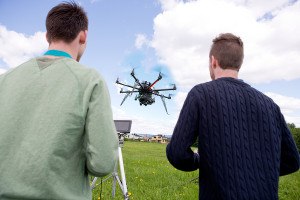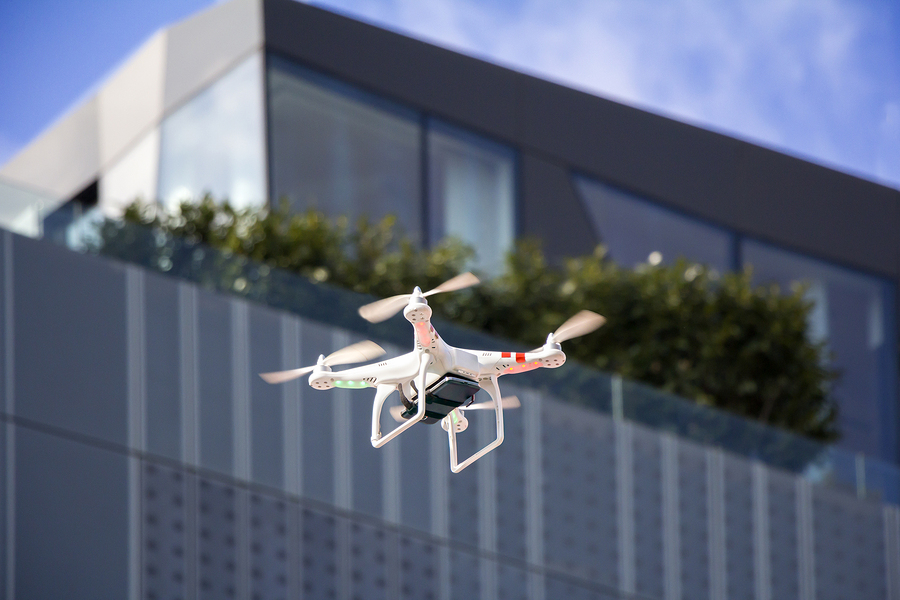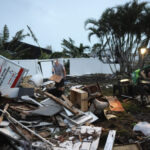John Taylor didn’t like the idea of being forced by the Federal Aviation Administration to register his drones. The requirement was “authoritarian,” the Maryland attorney said, and wouldn’t deter reckless fliers.
So the aviation law novice – he works in insurance – took the federal government to court. And won.

A federal appeals court this month struck down a 2015 FAA rule that compelled owners of drones used for recreation to register them.
Taylor’s unexpected success has upended a system meant to balance public safety and the rights of hobbyists who have purchased millions of drones.
While he has been treated as a conquering hero by many recreational drone pilots – the editor of sUAS News wrote that Taylor “should never need to buy a beer at a model aircraft event again!” – others fear his win could be a Pyrrhic victory for the broader world of unmanned aircraft.
“Why do we have restrictions? Because we don’t want a drone ingested into an aircraft engine,” said Brian Wynne, a licensed pilot and president of the Association for Unmanned Vehicle Systems International, a leading industry group based in Arlington, Va.
Wynne said putting registration numbers on all aircraft should be seen as a basic safety requirement. But that was part of what was overturned by Taylor’s challenge.
“We have to have rules,” Wynne said.
Wynne’s group is working to expand what the FAA allows for commercial drone operators, including seeking broader authority to fly over people and laying the groundwork for unmanned delivery services. Such efforts will require new air traffic control abilities and a high level of coordination. A bunch of unmarked recreational drones complicates such efforts, he said.
“We want to create separation up there in order to maintain the phenomenally high level of safety we have,” Wynne said.
Registering through the online system cost $5 and required a name, email and physical address. Users also had to acknowledge that they would follow basic safety guidelines, including flying below 400 feet; staying clear of stadiums, aircraft, airports and emergency response efforts; and not flying drunk.
Taylor, who lives in the Silver Spring area, began getting deeply into drones in 2015, and has a fleet of about 20 quadcopters, hexacopters and fixed-wing planes. At his most active, he was flying over Maryland parks and fields, and sometimes in his back yard, several days a week and on weekends.
People have questioned him about his registration stance, saying: “It’s five bucks. Who cares?”‘ But, Taylor said, “it was about more than $5 bucks. It was the idea of government overreach.”
He argued that a federal law, passed by Congress and signed by President Barack Obama in 2012, explicitly prevented the FAA from making rules covering “model aircraft,” defined as “unmanned aircraft” flown for recreational purposes. (Operators must also be able to see the vehicles in the sky.)
“It sounds corny. But as an attorney and citizen, the fact that they would so flagrantly violate a law…really stuck in my craw,” Taylor said.
In an opinion May 19, a three-judge panel of the U.S. Court of Appeals for the D.C. circuit agreed. Although the court said that drone-related safety incidents have been increasing and registration as a policy may help “to some degree,” the letter of the law was clear.
“In short, the 2012 FAA Modernization and Reform Act provides that the FAA ‘may not promulgate any rule or regulation regarding a model aircraft,’ yet the FAA’s 2015 Registration Rule is a ‘rule or regulation regarding a model aircraft.’ Statutory interpretation does not get much simpler,” the opinion reads.
And so the requirement was vacated.
The FAA said it is reviewing the decision and considering its options. Registration and other regulations were put “in place to ensure that drones are operated in a way that is safe and does not pose security and privacy threats,” the agency said in a statement.
The ruling is likely to pull Congress into legislating the matter, a process that could either lead to a relatively simple fix or open the door to broader debates.
Sen. Mark R. Warner (D-Va.), a proponent of unmanned technologies, said he expects Congress to take up the ruling in the coming months.
“With the unmanned aerial industry growing at such a rapid clip, we need some basic rules of the road in place sooner rather than later,” Warner said. The registration process was “a reasonable step,” he said.
Some remain skeptical. The Academy of Model Aeronautics, which was founded in the 1930s to represent model airplane builders and includes drone enthusiasts, said it was “encouraged” by the court’s decision.
Although registration makes sense in some cases, it “shouldn’t apply at such a low threshold that it includes toys,” the group said. Members comply with the group’s registration system, it said, and “we shouldn’t be burdened by overly broad regulations.”
As of May 23, there were 836,577 registrations in the FAA’s system, according to the agency. That included 764,830 hobbyists, who each were given a single identification number covering all the drones they own. The rest were mostly commercial drones that are registered individually, and that system remains in place.
The FAA says the number of reports from pilots, law enforcement and others of “potential encounters” with drones has been rising sharply, and warned that operating “around airplanes, helicopters and airports is dangerous and illegal.” There are now more than 100 such reports a month, it said.
Last October, a California helicopter pilot caught a glimpse of an unauthorized white drone flying at 1,800 feet above sea level near the “Hollywood” sign. No “evasive action” was necessary, according to FAA records. The next month, a pilot in Mesa, Ariz. said a large black drone “passed just above me” at 2,200 feet. Police were ¡notified.
The agency said that local authorities, using the federal registration numbers on crashed drones, have been able to trace the identify of operators in a handful of enforcement cases.
Taylor says there are bad citizens in the air, and a quick search of YouTube would give the FAA plenty of targets for more aggressive enforcement, such as the operator he saw boasting of illegally flying his drone from miles away.
He said the great majority of fliers are law-abiding, responsible and courteous. When dog-walkers or baseball players showed up on a field he was flying over, “I would stop what I was doing to leave,” Taylor said. “I don’t want to hog the field and bring a bad name to the hobby and annoy people.”
Taylor goes hard after his hobbies. He was a beer maker before he spent five years as a beekeeper. After he taught himself to code and wrote billing software for his law firm, he built himself a cabin in West Virginia, which got him started on stained-glass window making.
He took to drones with the same zest, captivated by the science of flight and intricacies of in-air cinematography. But lately his drones have gotten dusty. He has been too scared to fly them.
Taylor said he doesn’t want to sound paranoid, but “I don’t want to give the FAA anything they can hold over me.” The legal case puts a “bull’s eye” on him, he insists, and given legal uncertainties he said he can’t risk selective ¡enforcement.
In a statement, the FAA said: “There is no reason why Mr. Taylor shouldn’t join the thousands of other hobbyists who continue to fly their drones safely and responsibly after the ruling.”
Was this article valuable?
Here are more articles you may enjoy.


 Fixing the Claims Experience Where It Matters Most: In the Mess
Fixing the Claims Experience Where It Matters Most: In the Mess  Brazil Sues EV Giant BYD Over ‘Slavery’ Conditions at Plant
Brazil Sues EV Giant BYD Over ‘Slavery’ Conditions at Plant  Chinese Hacked US Telecom a Year Before Known Wireless Breaches
Chinese Hacked US Telecom a Year Before Known Wireless Breaches  Here Comes Another Busy Atlantic Hurricane Season, But Will It Be as Crazy as 2024?
Here Comes Another Busy Atlantic Hurricane Season, But Will It Be as Crazy as 2024? 